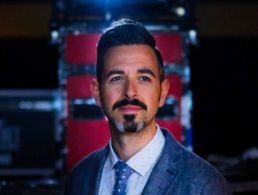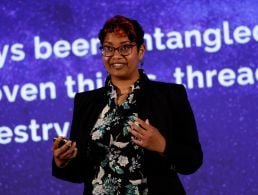At Future Human, Rob O’Donohue of Gartner explained why hiring neurodiverse people is a wise business decision.
Neurodiversity can be a crucial ingredient of a thriving and inclusive workforce. According to Gartner’s Rob O’Donohue, embracing neurodivergent talent isn’t just a corporate social responsibility, but sound business logic.
O’Donohue is a senior director analyst at Gartner, advising CIOs through major organisational change programmes. Speaking to the Future Human 2020 audience, he explained that neurodiverse people have traditionally been “filtered out” in a large proportion of organisations. But given the fact that so many businesses encourage thinking differently and outside the box, this shouldn’t be the case.
Neurodivergent individuals think differently to those who are neurotypical, and include people with dyspraxia, dyslexia, autism, Tourette syndrome, attention deficit hyperactivity disorder, bipolar disorder and more.
Many neurodiverse people can also be “highly skilled” individuals that can help companies gain a competitive edge, O’Donohue added. He shared eight things to consider about hiring neurodivergent talent.
1. Supply and demand of neurodivergent talent
CIOs are hiring talent from a market that can’t keep up, O’Donohue said, particularly when it comes to critical digital skills. He highlighted a UK shortage of 56,000 data scientists in 2020, for example.
Gartner research on neurodivergent people suggested that 75pc were qualified and enthusiastic about gaining employment. Many are highly analytical, he explained, and excellent at problem solving and information processing, with an “outstanding ability” to focus on the task at hand.
But only a small percentage of neurodiverse people are employed. So, why are they being left out?
2. The ‘filtering-out problem’
One answer to that question is what O’Donohue called “the filtering-out problem”. Despite the high percentage of neurodivergent people who are qualified and eager to work, an equally large percentage are not being considered based on the way many hiring processes and systems are set up.
“In effect, this means that many neurodivergent people are being filtered out,” he said. “CIOs are struggling to find the talent, yet it exists. It’s just that they’re not looking in the right places.”
3. Neurodiversity in the workplace is on the rise
The good news, O’Donohue said, is that companies are beginning to better embrace the neurodivergent talent pool. He mentioned BNY Mellon, Fujitsu, Microsoft, EY, IBM and VMware as some of the businesses that are working on neurodiversity initiatives.
“It’s becoming clearer that the untapped neurodivergent talent pool can be a very viable option to bridge the gap,” he said. “This is the secret that is slowly being revealed.”
4. Success and neurodiversity
Some of the world’s most successful people are neurodivergent individuals. For example, billionaire and entrepreneur Richard Branson has dyslexia, and teenage climate activist Greta Thunberg has Asperger’s syndrome. O’Donohue described them as “leaders and agents for change”.
“Yet if they had applied for a position in 70pc-plus of organisations they would have been filtered out,” he added.
5. The ‘attract and include’ framework
In response to these challenges, O’Donohue has developed a framework that prioritises attracting and including neurodivergent talent. It outlines eight steps that CIOs and other leaders should take to bring more neurodiverse candidates on board, including building a business case, scoping a programme, developing a recruitment process and elevating understanding and awareness among staff.
Like any business case, this needs to be compelling, clear on the value proposition and cost-benefit analysis, and provide supporting evidence. O’Donohue shared examples that can be used in highlighting the potential value, such as the fact that neurodivergent employees helped SAP develop a technical fix that saved the company an estimated $40m.
As for recruitment processes, O’Donohue said that these can be very different for neurodivergent talent, so it’s crucial that CIOs work closely with HR to adapt. He highlighted Microsoft’s implementation of a more autism-friendly interview experience, which takes part across several days to give neurodiverse people “every chance of showcasing their talents”.
6. Support circles
Support for neurodiverse individuals shouldn’t stop after they’ve been hired. O’Donohue explained that “support circles” are an important method of helping people transition and adjust to a workplace’s environment.
Socialising and meeting so many new people can be uncomfortable and overwhelming for some people with neurodiversities, he said. For that reason, leaders must take a “full-ecosystem perspective” when integrating neurodiverse staff members into the workforce.
Support circles can involve newly created roles, responsibilities and groups to facilitate the transition, as well as tailoring the groups that already exist. The most important players at the early stages are the manager, the external job coach and the community mentor.
“As the individual further assimilates into the organisation, engagement with roles from wider circles is needed,” O’Donohue said. These can include employee resource groups, career coaches and team buddies.
7. The workplace environment
Cultivating the right working environment for neurodivergent employees requires CIOs to collaborate with colleagues across facilities, partners, HR, diversity and inclusion, finance and their own leadership team.
This doesn’t mean lowering a neurodivergent individual’s performance indicators or job functions. It means modifying work environments or the ways in which tasks are completed to help employees successfully carry out their duties.
Leaders should prioritise spatial and technological elements of the workplace as well as work schedules when designing for a neurodiverse workforce, O’Donohue said.
8. Remember individuality
Finally, O’Donohue emphasised the importance of recognising individuality when adapting the workplace for neurodiverse talent. It’s not a one-size-fits-all approach, he explained. “If you set up for an autistic individual, that could differ per individual.”
He left the audience with a quote from Dr Stephen Shore, professor of special education at the Adelphi University and an advocate for people with autism: “If you’ve met one person with autism, you’ve met one person with autism”.




